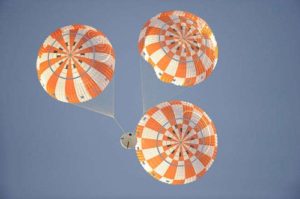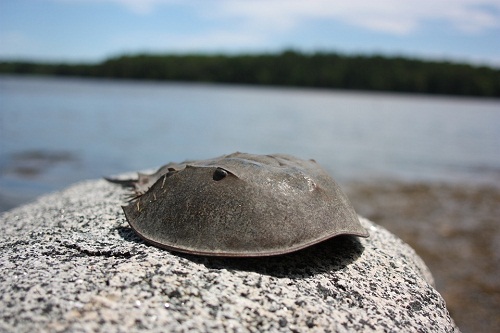
NASA is going to carry out a test of the Orion human space capsule’s parachute system today at the U.S. Army’s Yuma Proving Ground in Arizona.
Orion Capsule Parachute Assembly System (CPAS) drop test will take place at 7:30 a.m. local time (9:30 a.m. EST/1430 GMT) and will involve dropping a model of Orion from a C-17 aircraft that will be flying at an altitude of 25,000 feet.
This will be Orion’s second airdrop test, in a series of eight, before the parachute system qualifies for crewed flights.
NASA has designed the Orion Multi-Purpose Crew Vehicle or Orion MPCS to carry a team of four astronauts to beyond Low Earth Orbit (LEO). The primary aim of the spacecraft is to facilitate astronauts to explore more about Mars and asteroids and to get back crew and supplies from the International Space Station (ISS) if required.
Orion’s parachute system consists of 11 parachutes in total. Three of these 11 parachutes are forward bay cover parachutes that will be used first. Two of the 11 parachutes are drogue parachutes, which will be deployed second, and then three parachutes are pilot parachutes which are intended for deployment at about 9,500 feet.
In a statement, NASA said: “During the test, an engineering model of the Orion spacecraft will be dropped from a C-17 aircraft flying at an altitude of 25,000 feet. This test will simulate a descent sequence astronauts might experience if they have to abort a mission after liftoff. The test sequence begins under simulated abort conditions when Orion is traveling at the relatively slow speed of about 130 mph, as compared to 310 mph for a normal end of mission Earth re-entry.”
“The team will focus on two primary aspects of system performance in this scenario: deployment of Orion’s two drogue parachutes at low speeds, and deployment of its three main parachutes in preparation for landing.”
“Orion’s parachutes are critical to the safe return of the spacecraft to Earth, whether during an abort sequence or at the end of a successful deep space mission. They help stabilize and slow the crew module to about 20 mph, enabling a safe splashdown in the ocean.”
“Orion is built to take astronauts farther into the solar system than ever before. The spacecraft will carry astronauts to space, provide emergency abort capabilities, sustain the crew during their mission and provide safe re-entry through Earth’s atmosphere.”

